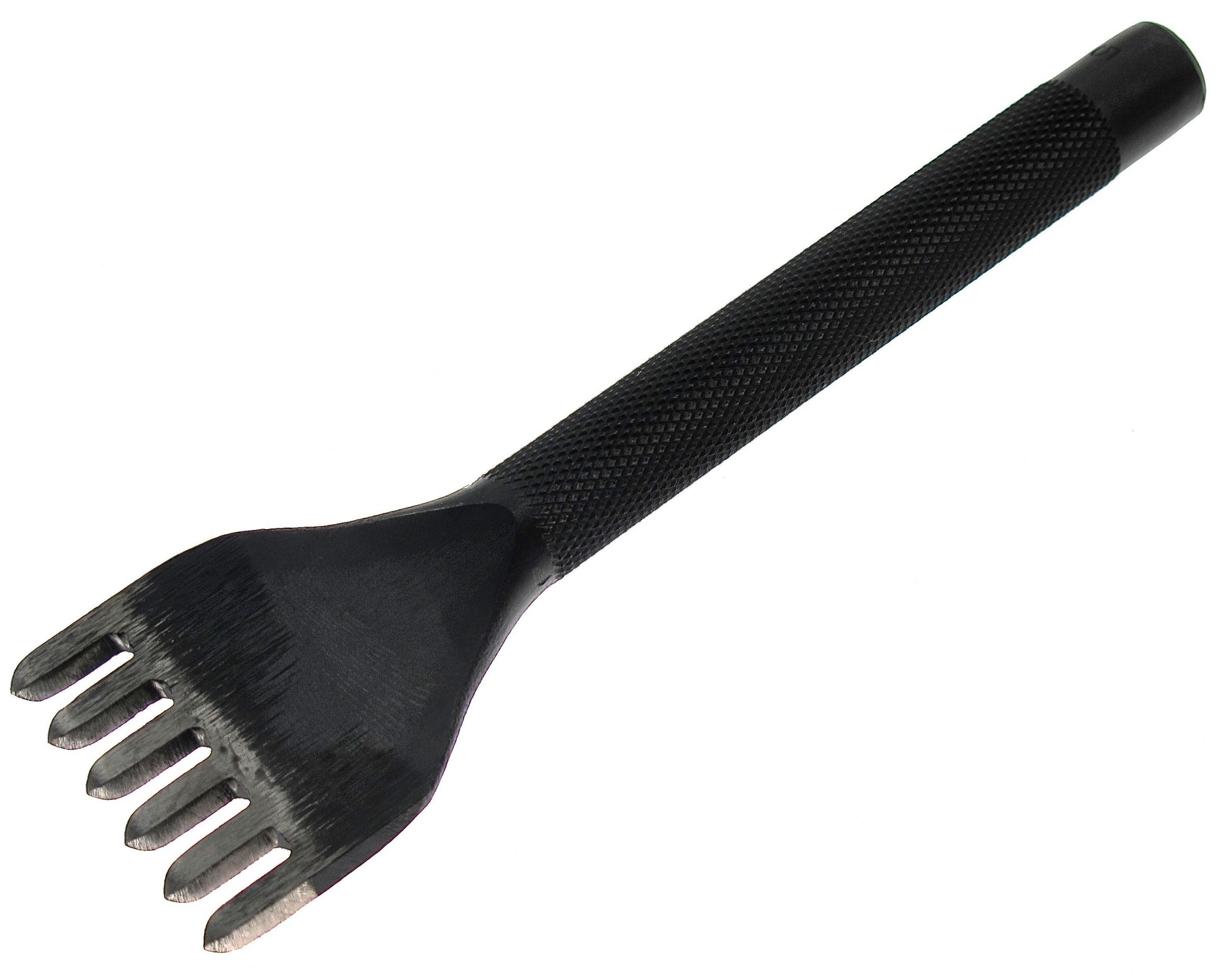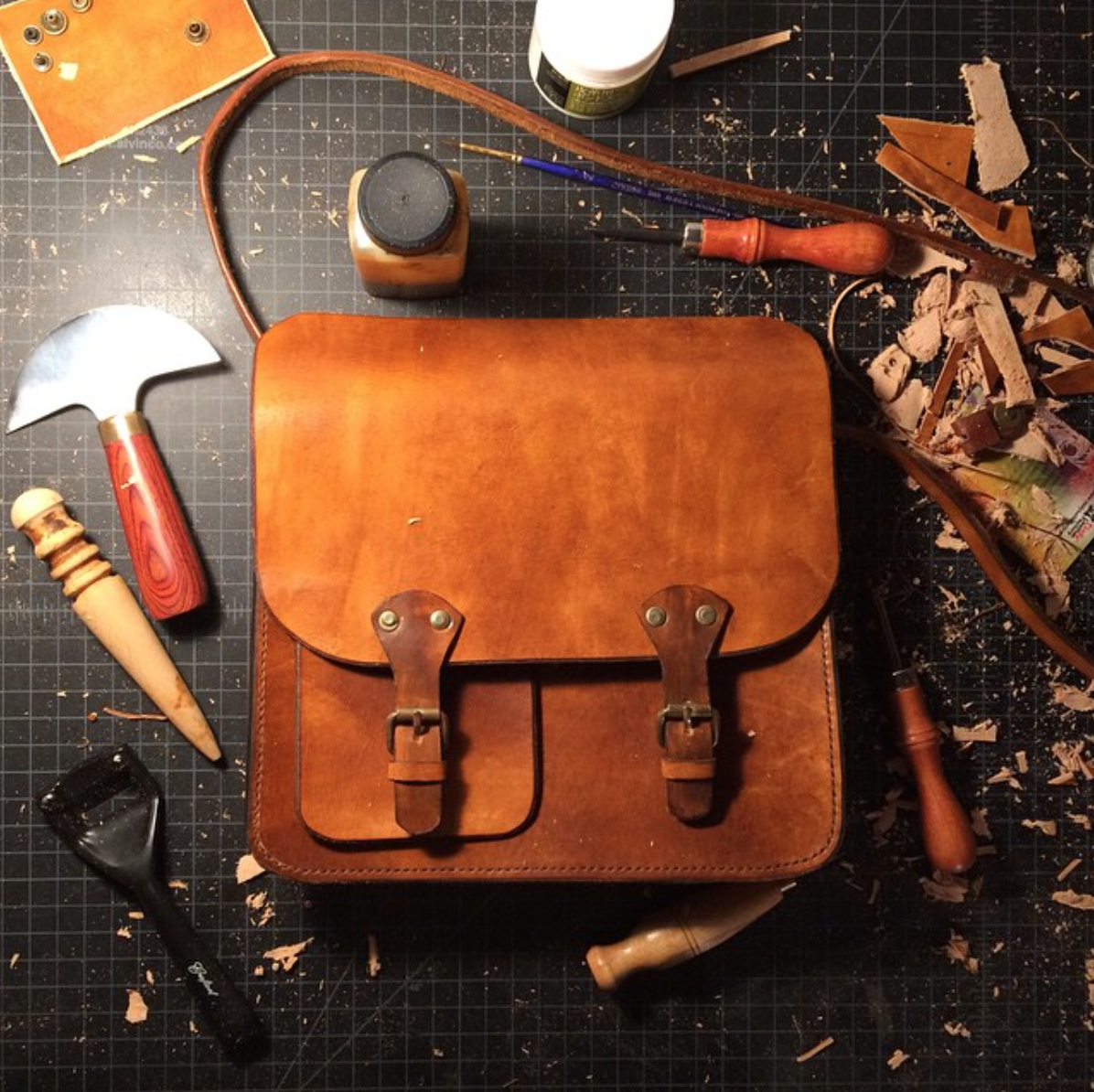I’m not saying that my stitching is perfect, but it has definitely come a long way. All the mistakes that you see in the first picture are from using my awl incorrectly. It’s obvious that the stitching isn’t great, but what's really hard to tell is why it isn’t great. In other words: sure I held my awl wrong, but how do I hold it the right way next time?
If you don’t like how your stitching looks, there’s two main sources for the problem. One being the awl, as I’ve already mentioned, and the second being your stitching technique. Stitching technique deserves a post of its own, and probably more than just one. We will just be looking at issues caused by your awl in this post. The good thing is, if you don’t like your stitching chances are it’s your awl use. And I promise that if you give attention to these four things your stitching is going to get noticeably better. First let’s take a look at what good awl work looks like
Awl Work Done Right:
Notice that all the diamonds are in a row, each angled the same, and each the same size. When these holes were created using an awl, they were done correctly. And because of this, the stitching rests in the correct spot and looks neat as well.
Problem 1: Flat Stitching
One common problem to have is that the front side (the side you stick the awl through) is neat, but the back side (the side the awl comes out of) is not. When this is the case the stitch on the back side usually looks like this.
This is actually a pretty simple fix. The problem is that the awl is not being pushed far enough through the leather. When the back side looks like this it is because only the point of the awl made it though, and wasn’t enough to create the diamond shape you want for nice stitching. This causes the stitching to flatten out and the holes to look odd. This can also happen when using a chisel. Take a look at your awl or your chisel and see how far along it is along the blade before the diamond shape fully forms.
Problem 2: Stitching Holes are Unaligned
Another problem that usually happens on the back side of your stitch is that the stitching holes don’t line up and not all of them sit in the stitching grove you created. It looks something like this.
This happens because the awl is being held at the wrong angle, and is easier to mess up the thicker your leather gets. When you stab the awl through the leather, the awl needs to be perfectly perpendicular to the leather. If you angle the awl slightly high or low as you stab it through the back side of the hole will not sit in the stitching line. If the project your working on can be held by an stitching pony use it. It will allow you to give full attention to creating the hole at the right angle.
Problem 3: Stitching Holes are Different Sizes
This next problem took a long time for me to figure out. I had spent the time learning to get my holes straight and kept them at a consistent angle, but they were all different sizes. It looks like this:
The sizes are definitely exaggerated in this image, but you can see how even variation in size can make the stitching look pretty ugly. This is for two reasons. Unlike problem #1 the awl is being pushed through far enough to create the diamond shape, but not pushed through consistency. A chisel blade quickly goes from point to diamond shape, but with the awl this transition is gradual. In most awl blades it’s not until 1/3 to 1/2 way down the blade that the maximum thickness is reached. This is a good thing because it means you can adjust diamond size, but creates a problem if you aren’t consistent. The second reason this happens usually has to do with the way that you remove the awl. If your awl isn’t sharp enough it can be tricky to remove from the leather once you’ve created a hole. I would sometimes rock my awl back and forth to loosen as it was removed. Avoid doing this is you can as it will stretch the leather a create a larger than normal hole. It is, however, a great technique to use when widening a hole for a backstitch.
Problem 4: Stitching Holes are Crooked
This next problem happens when the tops of your diamond holes aren’t all flat. Your stitching will end up looking like this.
This happens because the awl rotated forward or backward when used. When you use the awl you need to keep the flat side of the diamond blade parallel with the edge of the leather. A small rotation of your wrist as you stab the leather will mess this up. For me, this was the hardest part to master when using an awl. The best way to fix this is to be attentive of each hole you create. Yes, it’s going to take you a lot longer, but you need to spend the time identifying what the awl looks like when held at the right angle. Vergez Blanchard sells an all with a flattened handle to help you see and feel when you’re holding the awl incorrectly.
Nice stitching takes awhile to master, but knowing what to look for is a great place to start. I’d really love to see some of your guys’ before and after pictures of your stitching. Please post them in the comments below.















